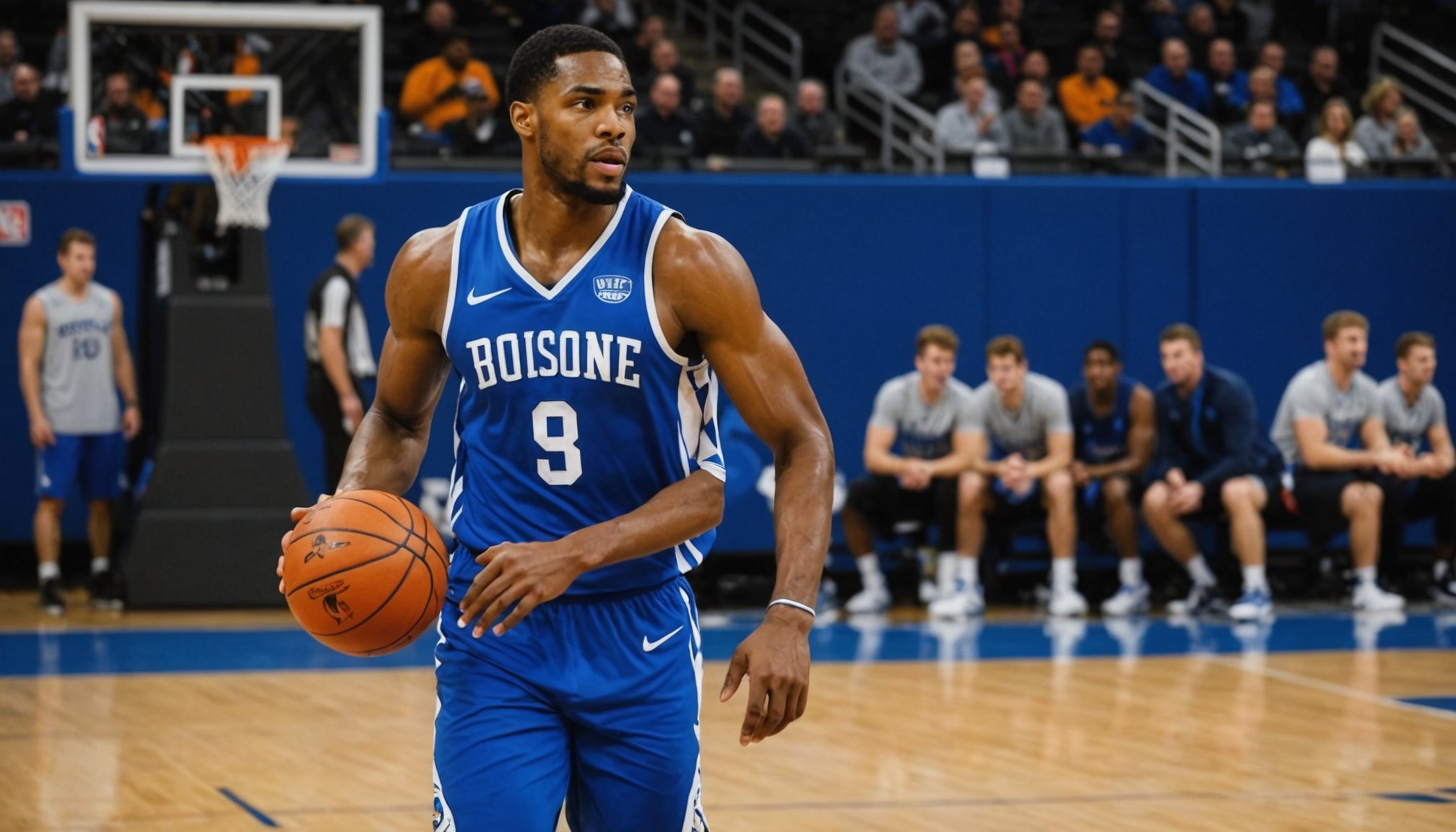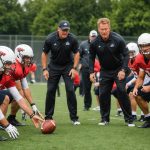Introduction to Resistance Training and Basketball Performance
Resistance training is a cornerstone for enhancing athletic prowess, especially in sports such as basketball. It augments muscle strength, power, and endurance, all of which are crucial for peak performance on the court. By systematically challenging the muscular system, athletes can improve their ability to execute explosive movements, maintain stamina throughout the game, and reduce the risk of injury.
In basketball, the importance of targeted resistance training cannot be understated. Players frequently engage in high-intensity movements such as jumping, sprinting, and pivoting, demanding robust physical capabilities. This type of training helps basketball players improve not only their muscle strength but also their agility and coordination, which are essential for effective defence and scoring.
Also to discover : Top Stretching Techniques to Help UK Basketball Players Prevent Injuries and Boost Performance
Focusing on the current state of basketball training in the UK, there has been a growing recognition of the importance of integrating resistance training into the routine of UK athletes. Despite this progress, challenges remain, and many training programs are still evolving to incorporate comprehensive resistance training strategies. The UK’s basketball community is increasingly acknowledging that tailored training regimes, which include resistance exercises, are crucial in developing players’ competitive edge. This shift is vital for the growth and success of UK basketball athletes on both national and international stages.
Scientific Evidence on Resistance Training
The effectiveness of resistance training in enhancing athletic performance is widely supported by scientific studies. Numerous research studies link resistance training to significant improvements in various performance metrics, including strength, speed, and endurance. Athletes who incorporate resistance training typically experience increased muscle mass, enhanced muscle power, and improved neuromuscular efficiency. Such improvements contribute to better overall performance in sports and physical activities.
Also read : What factors contribute to the home-court advantage in basketball?
Studies have demonstrated that resistance training significantly boosts strength levels. For instance, a meta-analysis highlighted average strength gains of approximately 20-50% following systematic resistance training protocols. The key to these improvements lies in optimising training variables such as intensity, volume, and frequency.
In terms of speed, studies show that incorporating resistance training can enhance sprint performance by improving muscular power and explosive strength. This type of training is critical in sports requiring quick bursts of speed, such as track and field, soccer, and basketball.
Comparative studies emphasise that resistance training may outperform other methods, such as aerobic-only programs, in producing diverse performance benefits. While aerobic activities improve cardiovascular endurance, resistance training complements them by building strength and power essential for high-performance output. This comprehensive approach ensures a well-rounded improvement in athletic capabilities, making resistance training a vital component of any fitness regimen.
Case Studies of UK Basketball Players
Exploring the performance of UK basketball players provides fascinating insights into the benefits of specialised training techniques. By delving into specific case studies, we can better understand the impact of resistance training on player performance.
Success Stories
Several UK basketball players have seen significant improvements in their performance due to resistance training. A prime example is a renowned forward whose switch to an intensified resistance training regime remarkably enhanced his agility and strength on the court. This player’s training program focused on building core strength and endurance, resulting in improved performance statistics such as increased vertical jump and faster sprint times. These advancements contributed to his team’s overall success and highlighted the importance of tailored training strategies in basketball.
Team Approaches
UK basketball teams adopting resistance training strategies have also seen positive results. One notable example is a team that revamped its training philosophy to incorporate targeted resistance exercises, leading to marked enhancements in team performance metrics. The introduction of these training adjustments showed visible results in players’ stamina and defensive capabilities. Coaches report that the inclusion of resistance training has not only refined their teams’ skills but also fostered a sense of unity and strategic synchronisation, proving it to be a valuable component of modern training regimes.
Expert Insights and Opinions
Expert opinions from basketball coaches and trainers emphasize the importance of integrating resistance training into an athlete’s conditioning program. Resistance training, often perceived as secondary to skill work, is crucial in developing the strength and endurance necessary for peak performance. Coaching insights highlight that athletes benefit significantly from increased power and injury prevention with the right workout regimen.
Training recommendations from these experts outline that resistance training should be tailored to individual fitness levels and goals. Coaches suggest starting with fundamental movements, such as squats and deadlifts, which enhance muscle groups essential for basketball. Eventually, complex variations can be introduced for advanced training.
Experienced trainers explain that resistance training should complement traditional basketball practice, not replace it. They recommend integrating short, high-intensity sessions into the regular schedule for maximum efficacy, ensuring athletes’ practice time remains focused on honing skills and strategic gameplay.
Interviews with professionals like Coach Sarah Jones reveal how a balanced approach can uplift team performance. She states, “Incorporating customized resistance regimens into our routine not only improves players’ endurance but also instills a sense of discipline.”
Recognising the role of resistance training in overall conditioning, coaches advocate for an adaptable training program. This ensures players are prepared for the dynamic nature of the sport while minimizing the risk of overtraining.
Practical Resistance Training Programs for Basketball Players
Embarking on a structured training program can greatly enhance a basketball player’s performance. This section outlines both beginner and advanced workout routines that focus on strength conditioning tailored for basketball.
Training For Beginners
For those just starting, it’s important to implement basic resistance training exercises that are suitable for novice basketball players. Focus on exercises such as squats, lunges, and basic push-ups, which are crucial for building a strong foundation. Technique is paramount. Improper form can lead to injuries, so ensuring correct posture and movement is vital.
A realistic beginner program should aim for 2-3 sessions per week, with each session lasting between 30-45 minutes. This frequency allows the body to adapt to new stresses gradually, reducing the risk of injury. Incorporating rest days is equally important to allow the muscles to recover and grow stronger.
Advanced Training Techniques
As players progress, advanced training programs become essential. Experienced players can benefit from progressive resistance training strategies, incorporating both compound and plyometric exercises. This includes exercises like deadlifts, bench presses, and box jumps, which are designed to enhance power and agility.
Periodization, which involves varying training intensity and volume over time, is crucial to prevent overtraining and injuries. Adequate recovery strategies such as stretching, hydration, and sleep play significant roles in maintaining optimal performance and preventing setbacks.
Regional Considerations for Basketball Players in the UK
UK basketball players encounter unique challenges in training, highly influenced by regional factors. Despite basketball’s less established presence compared to sports like football and rugby, pockets within the UK boast a vibrant basketball culture. However, access to regional training facilities can be inconsistent, varying significantly across locales.
Training Facilities and Resources
Many regions in the UK lack specialized resources conducive to basketball-specific resistance training. Larger cities like London or Manchester offer better access to state-of-the-art facilities, but rural areas may struggle. This varied access influences the quality and frequency of resistance training available, affecting player development.
Cultural Attitudes
Cultural attitudes toward basketball and, by extension, its training methods vary, often featuring less emphasis on strength training than seen in the US or other basketball-centric countries. This perception can hinder the introduction and integration of effective resistance training programs. However, recognising geographical factors and focusing on improving local basketball culture can promote a more holistic approach to training.
Overcoming Challenges
Addressing these disparities requires a focused effort on improving regional training programs and facilities. Emphasising the importance of resistance training to coaches and players alike can cultivate a stronger basketball environment throughout the UK.
Conclusion: Integrating Resistance Training into Basketball Training
An effective resistance training integration can significantly elevate an athlete’s development and contribute to their performance enhancement. Athletes who incorporate resistance training into their routines often find improvements in strength, endurance, and agility. These benefits translate to better court performance, empowering players to outmaneuver competitors with both speed and power.
Adopting a holistic approach that merges resistance training with traditional basketball exercises is essential for comprehensive athlete development. This combination supports athletes in reaching new performance heights, addressing both their physical and skill-based needs. Such integration ensures not only the physical robustness required for competitive sports but also the tactical sharpness crucial for on-field success.
Looking forward, the exploration of advanced resistance training techniques in UK basketball opens exciting research avenues. Future directions might include personalized training programs that cater to the unique physical demands of basketball players. There is potential for developing innovative regimens that blend state-of-the-art technology with resistance exercises, setting a new standard in athlete performance enhancement.
With continued research and development, the adoption of resistance training within basketball training programs can revolutionize athletic preparation, offering promising results for both emerging talents and seasoned professionals alike.











